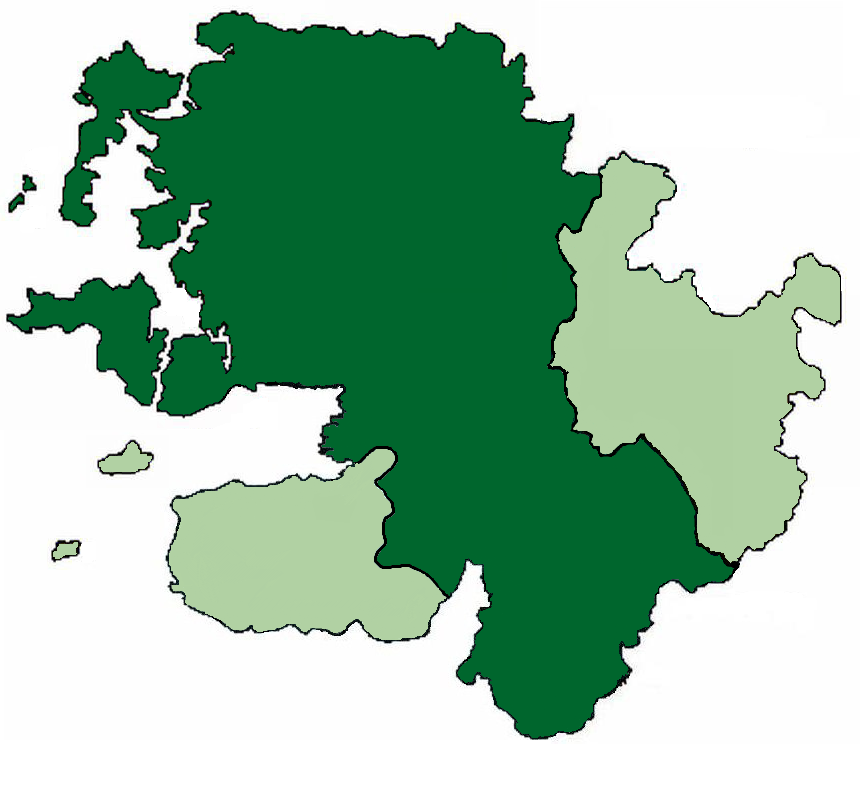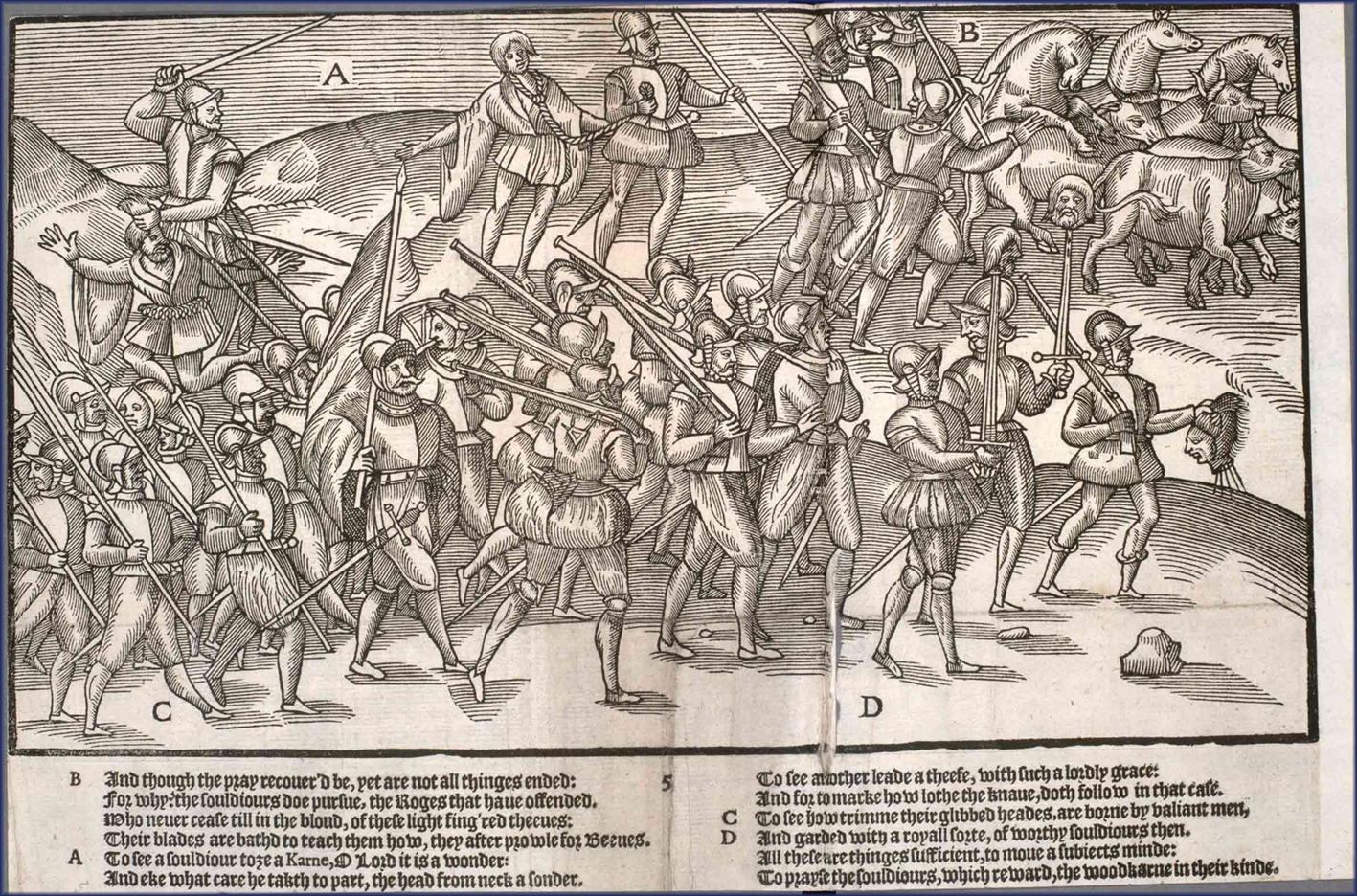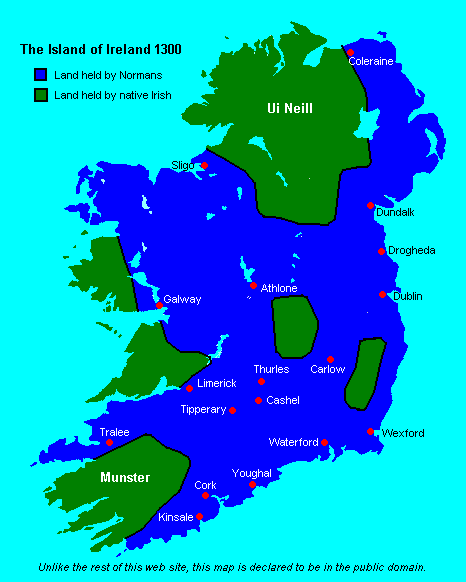|
Tibbot Na Long Bourke, 1st Viscount Mayo
Tibbot na Long Bourke, 1st Viscount Mayo (anglicised as Theobald Bourke; ; ; 1567 – 18 June 1629) was an Irish peer and parliamentarian. A prominent member of the MacWilliam Burkes of County Mayo, Tibbot was a Member of the Irish House of Commons and was later created the first Viscount Mayo. His successful life followed, and usefully illustrates, the difficult transition for Irish aristocrats from the traditional Gaelic world during the Tudor conquest of Ireland. Bourke's name had varying spellings such as "Teabóid" or "Tepóitt" in medieval Irish. Tibbot derived from ''Thibault'', the French for Theobald; and "na Long" meant "of the ships", as he was born on a ship. This was usually rendered in Tudor English as: Tibbott or Tibbot na Long. MacWilliam lordships Tibbot's Irish ancestors started with William de Burgh who was granted the overlordship of Connacht in 1215 by John Lackland. William's son Richard (d.1243) took actual possession of much of the province in the 13t ... [...More Info...] [...Related Items...] OR: [Wikipedia] [Google] [Baidu] |
Viscount Mayo
Viscount Mayo () is a title that has been created twice in the Peerage of Ireland, both times for members of the Bourke family. The first creation came in 1627 in favour of Tiobóid na Long Bourke, also known as Theobald Bourke. He was the son of Sir Richard Bourke, 18th lord of Mac William Iochtar (Lower Mac William), and Gráinne O'Malley. Miles, the 2nd Viscount, was created a baronet in the Baronetage of Nova Scotia in c. 1638. His son Theobald, the third Viscount, was also created a Baronet in the Baronetage of Nova Scotia in c. 1638 (although there are no records of this creation in the Great Seal). The third Viscount was executed in 1652 after being found guilty of murder by Cromwell's High Court of Justice in Connaught. The murders in 1642 became known as the "Shrule massacre", but it seems that Lord Mayo had done his best to prevent them. The third Viscount's daughter Maud married Col. John Browne, ancestor of the Marquesses of Sligo. On the eighth Viscount's death ... [...More Info...] [...Related Items...] OR: [Wikipedia] [Google] [Baidu] |
John Lackland
John (24 December 1166 – 19 October 1216) was King of England from 1199 until his death in 1216. He lost the Duchy of Normandy and most of his other French lands to King Philip II of France, resulting in the collapse of the Angevin Empire and contributing to the subsequent growth in power of the French Capetian dynasty during the 13th century. The baronial revolt at the end of John's reign led to the sealing of Magna Carta, a document considered a foundational milestone in English and later British constitutional history. John was the youngest son of King Henry II of England and Duchess Eleanor of Aquitaine. He was nicknamed John Lackland () because, as a younger son, he was not expected to inherit significant lands. He became Henry's favourite child following the failed revolt of 1173–1174 by his brothers Henry the Young King, Richard, and Geoffrey against their father. John was appointed Lord of Ireland in 1177 and given lands in England and on the continent. Duri ... [...More Info...] [...Related Items...] OR: [Wikipedia] [Google] [Baidu] |
Henry VIII
Henry VIII (28 June 149128 January 1547) was King of England from 22 April 1509 until his death in 1547. Henry is known for his Wives of Henry VIII, six marriages and his efforts to have his first marriage (to Catherine of Aragon) annulled. His disagreement with Pope Clement VII about such an annulment led Henry to initiate the English Reformation, separating the Church of England from papal authority. He appointed himself Supreme Head of the Church of England and dissolution of the monasteries, dissolved convents and monasteries, for which he was List of people excommunicated by the Catholic Church, excommunicated by the pope. Born in Greenwich, Henry brought radical changes to the Constitution of England, expanding royal power and ushering in the theory of the divine right of kings in opposition to papal supremacy. He frequently used charges of treason and heresy to quell dissent, and those accused were often executed without a formal trial using bills of attainder. He achi ... [...More Info...] [...Related Items...] OR: [Wikipedia] [Google] [Baidu] |
Kingdom Of Ireland
The Kingdom of Ireland (; , ) was a dependent territory of Kingdom of England, England and then of Kingdom of Great Britain, Great Britain from 1542 to the end of 1800. It was ruled by the monarchs of England and then List of British monarchs, of Great Britain, and was Dublin Castle administration, administered from Dublin Castle by a viceroy appointed by the English king: the lord deputy of Ireland. Aside from brief periods, the state was dominated by the Protestant English (or Anglo-Irish people, Anglo-Irish) minority, known as the Protestant Ascendancy. The Protestant Church of Ireland was the state church. The Parliament of Ireland was composed of Anglo-Irish nobles. From 1661, the administration controlled an Irish Army (1661–1801), Irish army. Although ''de jure'' styled as a kingdom, for most of its history it was ''de facto'' an English Dependent territory, dependency (specifically a viceroyalty). This status was enshrined in the Declaratory Act 1719, also known as th ... [...More Info...] [...Related Items...] OR: [Wikipedia] [Google] [Baidu] |
O Connor Sligo
Ó Conchobhair Sligigh (anglicised as O'Conor Sligo) is a Gaelic- Irish family and Chief of the Name. The Ó Conchobhair Sligigh were a junior branch of the Ó Conchobhair Kings of Connacht. They were descended from Brian Luighnech Ua Conchobhair (k.1181), a son of Irish High King Tairrdelbach Ua Conchobair and were Lords of Sligo into the 17th century. They were also referred to as Clann Andrias after a son of Brian Luighnech. The family first established themselves in the tuath of Cairbre Drom Cliabh and went on to become Lords of Lower Connacht (''Íochtar Connacht''), modern-day County Sligo, by taking advantage of Hiberno-Norman rivalry which led to the removal of FitzGerald dynasty holdings in the area by the House of Burke, who were the Lords of Connaught, and the collapse of their power in the Burke Civil War. In later centuries they attempted to hold off the O'Donnell dynasty of Tyrconnell, eventually having to acknowledge their overlordship before the collapse of ... [...More Info...] [...Related Items...] OR: [Wikipedia] [Google] [Baidu] |
Barbary Pirates
The Barbary corsairs, Barbary pirates, Ottoman corsairs, or naval mujahideen (in Muslim sources) were mainly Muslim corsairs and privateers who operated from the largely independent Barbary states. This area was known in Europe as the Barbary Coast, in reference to the Berbers. Slaves in Barbary could be of many ethnicities, and of many different religions, such as Christian, Jewish, or Muslim. Their predation extended throughout the Mediterranean, south along West Africa's Atlantic seaboard and into the North Atlantic as far north as Turkish Abductions, Iceland, but they primarily operated in the western Mediterranean. In addition to seizing merchant ships, they engaged in ''Razzia (military), razzias'', raids on European coastal towns and villages, mainly in Italy, France, Spain, and Portugal, but also in the British Isles, and Iceland. While such raids began after the Muslim conquest of the Iberian Peninsula in the 710s, the terms "Barbary pirates" and "Barbary corsairs" ... [...More Info...] [...Related Items...] OR: [Wikipedia] [Google] [Baidu] |
Richard "the Iron" Bourke
Richard "the Iron" Bourke ( Irish: ''Risdeárd an Iarainn Bourke''; ; ; d. 1583), 18th Mac William Íochtar (Lower Mac William), was an Irish chieftain and noble. Background Bourke was a son of David de Búrca, 15th Mac William Íochtar, by his second wife, Finola Ni Flaithbertaigh. He succeeded his cousin, Seaán mac Oliver (John) Bourke, 17th Mac William Íochtar (d.1580), a great-grandson of Ricard Ó Cuairsge Bourke, 7th Mac William Íochtar (d.1479). In English, he was known as Richard Bourke, or "Iron Richard". In medieval Ireland, Richard was a rare name, most found in Norman-origin families like the Bourkes. Richard was second husband to Grace O'Malley. He was the father of several children, including Tibbot ne Long Bourke, 1st Viscount Mayo (23rd Mac William Íochtar) and Nora Bourke (Honoria de Burgo), a lay Dominican Sister who founded a convent close to Burrishoole Friary, County Mayo. Honoria died while attempting to escape from Cromwellian soldiers in 1652. ... [...More Info...] [...Related Items...] OR: [Wikipedia] [Google] [Baidu] |
Pirate
Piracy is an act of robbery or criminal violence by ship or boat-borne attackers upon another ship or a coastal area, typically with the goal of stealing cargo and valuable goods, or taking hostages. Those who conduct acts of piracy are called pirates, and vessels used for piracy are called pirate ships. The earliest documented instances of piracy were in the 14th century BC, when the Sea Peoples, a group of ocean raiders, attacked the ships of the Aegean and Mediterranean civilisations. Narrow channels which funnel shipping into predictable routes have long created opportunities for piracy, as well as for privateering and commerce raiding. Historic examples of such areas include the waters of Gibraltar, the Strait of Malacca, Madagascar, the Gulf of Aden, and the English Channel, whose geographic structures facilitated pirate attacks. The term ''piracy'' generally refers to maritime piracy, although the term has been generalized to refer to acts committed on land, in th ... [...More Info...] [...Related Items...] OR: [Wikipedia] [Google] [Baidu] |
Gaelic Resurgence
Gaelic (pronounced for Irish Gaelic and for Scots Gaelic) is an adjective that means "pertaining to the Gaels". It may refer to: Languages * Gaelic languages or Goidelic languages, a linguistic group that is one of the two branches of the Insular Celtic languages, including: ** Primitive Gaelic or Archaic Gaelic, the oldest known form of the Gaelic languages ** Old Gaelic or Old Irish, used c. AD 600–900 ** Middle Gaelic or Middle Irish, used c. AD 900–1200 ** Irish Gaelic (), including Classical Gaelic and Early Modern Gaelic, c. 1200-1600) *** Gaelic type, a typeface used in Ireland ** Scottish Gaelic (), historically sometimes called in Scots English *** Canadian Gaelic ( or ), a dialect of Scots Gaelic spoken in the Canadian Maritime region ** Manx Gaelic ( or ), Gaelic language with Norse elements Culture and history *Gaelic Ireland, the history of the Gaels of Ireland * Gaelic literature *Gaelic revival, a movement in the late 20th century to encourage both the use of ... [...More Info...] [...Related Items...] OR: [Wikipedia] [Google] [Baidu] |
Hiberno-Norman
Norman Irish or Hiberno-Normans (; ) is a modern term for the descendants of Norman settlers who arrived during the Anglo-Norman invasion of Ireland in the 12th century. Most came from England and Wales. They are distinguished from the native Gaelic Irish; although some Normans eventually became Gaelicised. The Hiberno-Normans were a feudal aristocracy and merchant oligarchy who controlled the Lordship of Ireland. The Hiberno-Normans were associated with the Gregorian Reform of the Catholic Church in Ireland and contributed to the emergence of a Hiberno-English dialect. Some of the most prominent Hiberno-Norman families were the Burkes (de Burghs), Butlers, and FitzGeralds. One of the most common Irish surnames, Walsh, derives from Welsh Normans who arrived in Ireland as part of this group. Some Norman families were said to have become " more Irish than the Irish themselves" by merging culturally and intermarrying with the Gaels. The dominance of the Catholic Hibern ... [...More Info...] [...Related Items...] OR: [Wikipedia] [Google] [Baidu] |
Mac William Iochtar
Mac or MAC may refer to: Common meanings * Mac (computer), a line of personal computers made by Apple Inc. * Mackintosh, a raincoat made of rubberized cloth * Mac, a prefix to surnames derived from Gaelic languages * McIntosh (apple), a Canadian apple cultivar Arts and entertainment Fictional entities * Mac (''Green Wing''), a television character * Mac (''It's Always Sunny in Philadelphia''), a television character * Mac Gargan, an enemy of Spider-Man * Mac, a character on ''Foster's Home for Imaginary Friends'' * Angus "Mac" MacGyver, from the television series ''MacGyver'' * Cindy "Mac" Mackenzie, from the TV series ''Veronica Mars'' * Lt. Col. Sarah MacKenzie, from the TV series ''JAG'' * Dr. Terrence McAfferty, from Robert Muchamore's ''CHERUB'' and ''Henderson's Boys'' novel series * Mac McAnnally, in ''The Dresden Files'' series * Randle McMurphy, in the movie ''One Flew Over the Cuckoo's Nest'' * Mac Taylor, from the TV series ''CSI: NY'' * Mac, a canine characte ... [...More Info...] [...Related Items...] OR: [Wikipedia] [Google] [Baidu] |





